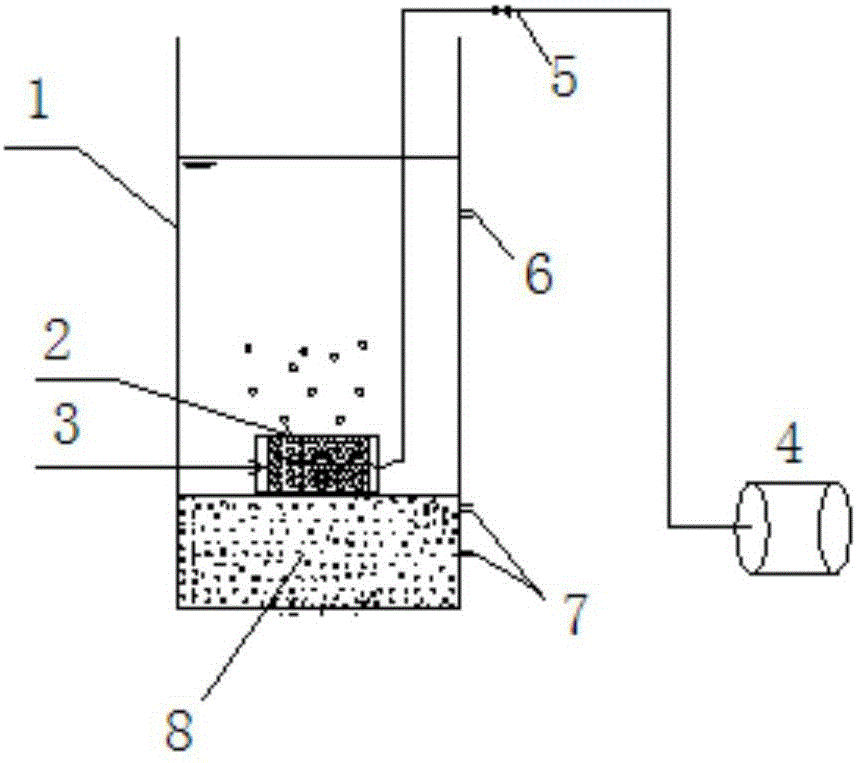In-situ control method for polluted lake and pond sediment
An in-situ, sedimentary technology, applied in the treatment of polluted waterways/lakes/ponds/rivers, sludge treatment, biological sludge treatment, etc. Easy to lose and other problems, to achieve a good repair effect, reduce the loss of bacteria, and easy to separate
- Summary
- Abstract
- Description
- Claims
- Application Information
AI Technical Summary
Problems solved by technology
Method used
Image
Examples
Embodiment 1
[0014] Embodiment 1: Using the method of the present invention to carry out in-situ remediation experiments on the bottom mud of polluted lakes and ponds and its overlying water.
[0015] Such as figure 1 As shown, a plexiglass column is used as a reactor to simulate the longitudinal distribution of natural lake water and sediment. Reactor 1 has a total height of 100 cm, a length and a width of 20 cm, bottom mud 8 is 20 cm deep, and water depth is 60 cm. The effective volume is 32L; in the reactor 1, the immobilized microbial carrier column 2 is set at the mud-water interface by hanging. The microporous aeration device 3 includes an aeration head and an air compressor 4 connected to the aeration head through an air supply conduit, and an air supply volume regulating valve 5 is arranged on the air supply conduit. The aeration head is 15 cm long and 2 cm in diameter, and is placed in the immobilized microbial carrier column 2 . The reactor 1 is provided with sediment sampling ...
PUM
 Login to View More
Login to View More Abstract
Description
Claims
Application Information
 Login to View More
Login to View More - R&D
- Intellectual Property
- Life Sciences
- Materials
- Tech Scout
- Unparalleled Data Quality
- Higher Quality Content
- 60% Fewer Hallucinations
Browse by: Latest US Patents, China's latest patents, Technical Efficacy Thesaurus, Application Domain, Technology Topic, Popular Technical Reports.
© 2025 PatSnap. All rights reserved.Legal|Privacy policy|Modern Slavery Act Transparency Statement|Sitemap|About US| Contact US: help@patsnap.com

